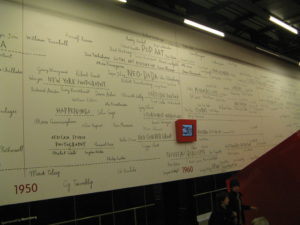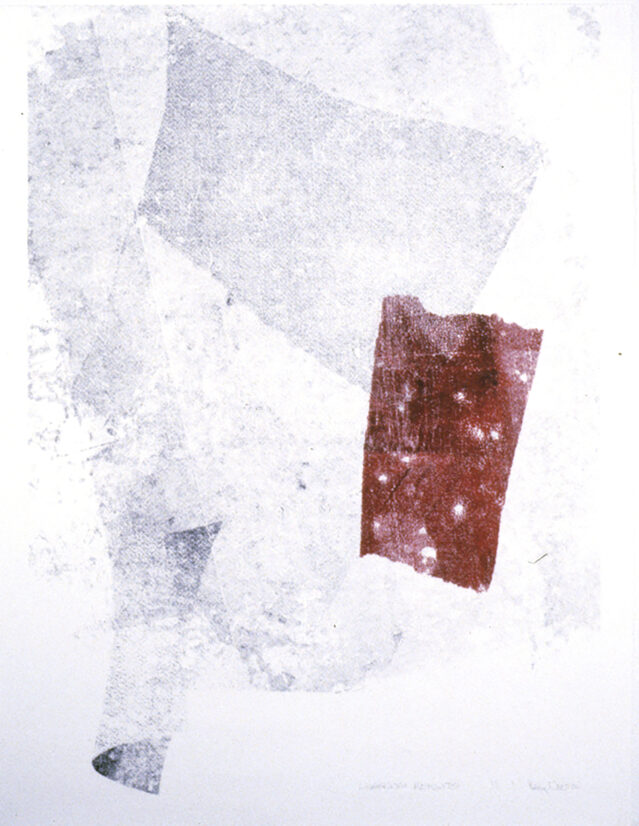I was awakened one evening long ago. My young Jewish friend wanted to talk about Abraham. I listened out of respect, surprised by her wonder, startled actually by her belief. This was a fairy tale to me, but she held onto it as if it were true. We took many steps that night, one foot in front of another, hiking around a lake, high in the Colorado mountains. I was quiet mostly while she spoke. But that night, something ignited in me because of the words she exclaimed about one man, long ago, who simply decided to trust what God had told him. “how could that be?!” I wondered.
“Go forth, Abraham” is a piece I finished this year. It is an emotive response from 40 plus years of steps for me, in which I have been reminded so very often of Abraham’s example.
 I don’t think it is a very pretty piece, and therefore, to me, it is all the more true.
I don’t think it is a very pretty piece, and therefore, to me, it is all the more true.
Abram, (renamed Abraham by God), was a real man, a very unique man. He listened. His radar was tuned for wherever there was God-frequency. And when he heard what God said, Abraham took it seriously and he stepped it out. If you read of his life in Genesis 12-25 you can actually follow the learning curve of this man’s developing trust in the One he was aiming to follow and learning to love. Though a Mesopotamian ancient, culturally distant from us, the human-ness of Abraham’s growing trust comes through. It was a real-time process that took decades. And God did real time revealings and interventions into Abraham’s process. The key throughout though is this verse: “Abraham believed God, and it was reckoned to him therefore as righteousness.” Abraham was not righteous, as his history only displays. But God made a call, based on Abraham’s distinguishing characteristic: and Abraham simply believed what God said. This is big. It was Abraham’s believing that accomplished righteousness. This believing Him is a big deal with God; it is defining for us.
Abraham lived according to the promises given him. These promises came in clear when they came, but they did not come often. And so there had to have been so many steps where Abraham was just putting one foot in front of the other, trusting, trying to remember what he had heard, relying on the character of the promise giver. That is what I was thinking about when I made this piece. This is a linear picture of all the heavy steps being made in desert sand, as Abraham moved out trusting. This piece looks at his whole journey. High in the stratosphere are markings: recordings of the words that rumble in his memory and bring light to his heavy soul. There are shining bits that come on the ground: the epiphanies he would tell us of if we could hear his whole story at the end. But a lot of the steps for Abraham as he lived them out, I expect felt dry and hard and shifting under his feet. Each step was consequential. And there is this dark hovering cloud overhead. It is not one that brings rain, but one that brings only darkness and static. Discouragement is hovering not far away.
You will be hard pressed to find a better example of a mortal who risked it all to believe the One he heard speaking. It was not a pretty thing, but it was true. And it ended up being amazing.
I am delighted therefore to highlight this piece for it has been selected to be part of a traveling show called “Scribes of Hope II” which will be making the rounds in the coming couple of years. An artist whose work I have admired, Timothy Botts, was the juror. This is cold wax with metal filings embedded, using also sumi ink and gold leaf; it is on a panel 19×15”
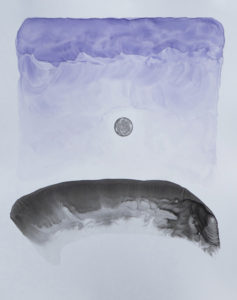
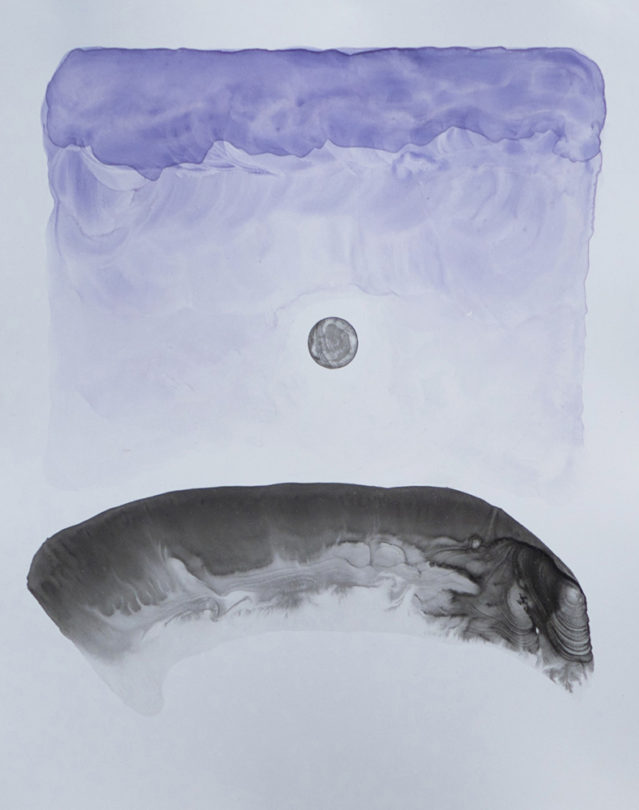
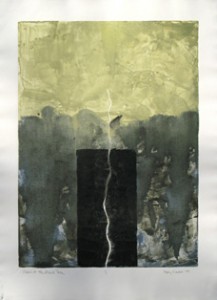 “What do you see, Jeremiah?” (Was this the first teaching using a visual aid?) God gets Jeremiah’s attention. God, the original socratic prompter puts His young prophet in the uncomfortable position of having to search out an answer. Jeremiah blurts out the obvious. (Were they literally having a conversation, did Jeremiah hear audible words? All I know is there was a very specific dialogue going on, and it is important enough to have been recorded.) Jeremiah answers, “I see a rod of an almond tree.” There was something physical they were looking at then. Jeremiah needed help understanding. Maybe there was a pause; pauses are pregnant with God. Maybe Jeremiah kept looking at this almond branch, wondering to himself “what in the world…” God breaks in then “You have seen well, for I am watching over my word to preform it.” And that is all we have in that beginning of their long relationship.
“What do you see, Jeremiah?” (Was this the first teaching using a visual aid?) God gets Jeremiah’s attention. God, the original socratic prompter puts His young prophet in the uncomfortable position of having to search out an answer. Jeremiah blurts out the obvious. (Were they literally having a conversation, did Jeremiah hear audible words? All I know is there was a very specific dialogue going on, and it is important enough to have been recorded.) Jeremiah answers, “I see a rod of an almond tree.” There was something physical they were looking at then. Jeremiah needed help understanding. Maybe there was a pause; pauses are pregnant with God. Maybe Jeremiah kept looking at this almond branch, wondering to himself “what in the world…” God breaks in then “You have seen well, for I am watching over my word to preform it.” And that is all we have in that beginning of their long relationship.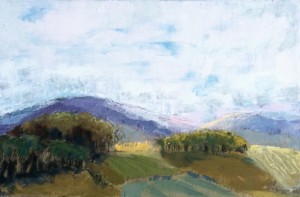 I have been enchanted by the big overlook for a long, long time; am coming to see reasons why in ways that are deeply satisfying and spiritually stretching. I remember a lecture I heard over 40 years ago about the Hebrew prophet Isaiah. He was a visionary who was given vistas to verbalize that were greater than he felt he could capture. He was a big picture guy. His words skip over the peaks of time, they run ahead, then linger back with comfort, and other times with terrible disruption. Time conflates in Isaiah’s visions. Assurances are way, way beyond him but he sees it! He scribes what he is given with his own unique voice.
I have been enchanted by the big overlook for a long, long time; am coming to see reasons why in ways that are deeply satisfying and spiritually stretching. I remember a lecture I heard over 40 years ago about the Hebrew prophet Isaiah. He was a visionary who was given vistas to verbalize that were greater than he felt he could capture. He was a big picture guy. His words skip over the peaks of time, they run ahead, then linger back with comfort, and other times with terrible disruption. Time conflates in Isaiah’s visions. Assurances are way, way beyond him but he sees it! He scribes what he is given with his own unique voice.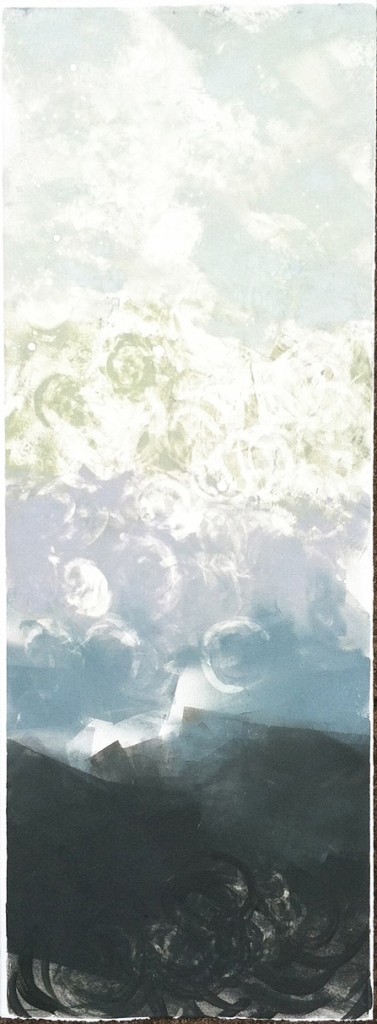
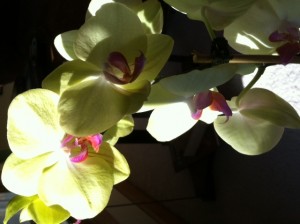
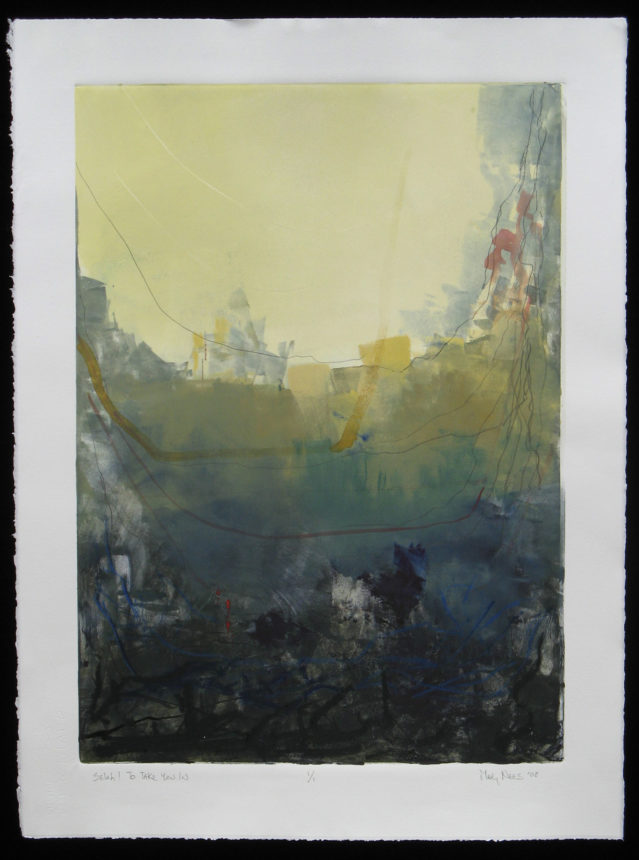
 I don’t think it is a very pretty piece, and therefore, to me, it is all the more true.
I don’t think it is a very pretty piece, and therefore, to me, it is all the more true.